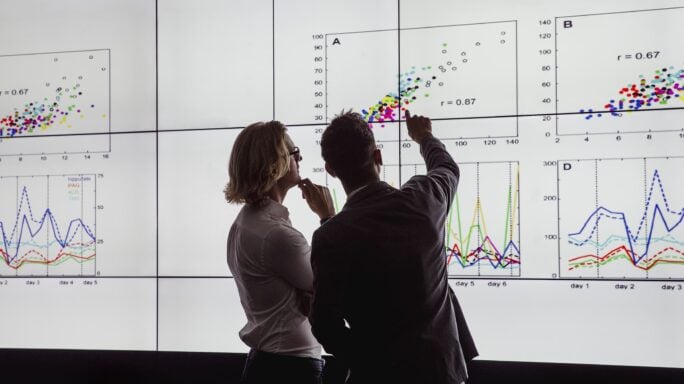COA gone wild? Taming your nonprofit chart of accounts with dimensions

Is your nonprofit dealing with an ever-multiplying Chart of Accounts (COA) just to get at the metrics behind transactions? Without the right accounting software, many nonprofits find it difficult to sift through unwieldy COAs with thousands of unique account numbers to decide which account to use, fix errors during close, or create reports.
Most traditional financial management solutions use a hard-coded structure for the nonprofit chart of accounts which forces you to set up a separate expense account for each segment. For example, to track receivables across 6 locations, with 5 departments each, and 15 projects, you’d need 450 account code combinations. What happens when you need to filter transactions by multiple factors? Chances are, that bloated COA is making it difficult and time-consuming for you to quickly get the information your nonprofit needs.
Fortunately, there’s a better way to organize financial information to make your nonprofit accounting faster and more efficient: Dimensions. Modern cloud financial management solutions, like Sage Intacct, help nonprofits keep their COA simple using a table-driven architecture to structure data around logic-based dimensions. Find out how a dimensional chart of accounts reduces complexity and provides better visibility while simplifying your COA.
Using traditional accounting systems, nonprofit organizations find themselves wrestling with an unwieldy, complicated chart of accounts or unable to track all the granular data they need. Sage Intacct’s multi-dimensional chart of accounts provides a flexible foundation to gain deeper financial visibility with greater context, make more informed decisions with real-time analysis, and maintain greater stewardship.
In Sage Intacct, you can define the key attributes that you want to use in accounting and reporting, like program, department, location, grant, project, class, and more. You can even rename or repurpose a standard dimension — for example, you can rename class to fund so you can track revenue and expenses against different funds.
Using multi-dimensional accounting, nonprofit organizations keep their COA simple by eliminating the need to create so many account numbers. Instead, simply “tag” transactions with dimensions to add financial and operational context to your data. These tags make it easy to search and sort data for reporting with meaningful context. Sage Intacct Dimensions deliver reporting insights, drive workflows, and secure views of information.
See the meaning behind transactions in minutes, not days
All too often with traditional accounting systems, nonprofits are forced to export data into Excel spreadsheets at the end of each period before they can begin the long process of filtering to get to the meaning behind the transactions.
Having a dimensional chart of accounts means nonprofits can get metrics in minutes and perform a more meaningful analysis of performance. You can track project expenses or results of fundraising efforts with ease. You can see which programs or fundraising efforts have the most traction.
Your nonprofit organization needs to understand which programs are making the biggest impact, where your donations are coming from, and what is costing you the most money. For example, let’s say your nonprofit has a new marketing campaign and donor initiative. Your board has requested to see the financial impact of this new campaign on a weekly basis. Using Sage Intacct, your team can provide a weekly review of up-to-the-minute financials to provide a complete picture of performance. You can even filter out the results of your campaign by location so development knows where to get the biggest return on investment.
“In the streamlining of our chart of accounts with the Sage Intacct Dimensions and our variants, we’ve been able to really get deeper into the detail. We’re able to pull data out around our donor reporting that we could never touch before. Our management team is looking at the financials for the first time and thinking ‘wow they’re not 6 months old, they are from last week.’ The finance and accounting team has just really risen in their own sense of empowerment.”
Shari Freedman, CFO, Room to Read
Close your books faster, with fewer errors
There’s another advantage to taming your nonprofit chart of accounts with dimensions. A lean COA also helps you close your books faster, with fewer errors to correct. A dimensional nonprofit chart of accounts emboldens your financial team to close the books in record time and quickly deliver key financial reports to the executive team.
How do dimensions make such a positive impact? Dimensions make it easier to set up and use your nonprofit chart of accounts. For example, instead of setting up separate expense accounts for each of your departments, you can set up a single expense account. Then use the department dimension to filter by individual departments in your reports.
Dimensions help you enable real-time reporting by pulling information across various aspects of your nonprofit. You can look at revenue for a particular fundraising activity or donor. Using dimensions, you can analyze nonprofit performance in ways not possible with a traditional chart of accounts. With the ability to independently tag transactions, you can slice and dice your data for more focused analysis. By tagging multiple dimensions as you enter transactions, you capture more granular operational and financial data tailored to your nonprofit. For example, if your nonprofit revolves around programs, you can tag specific programs in all your transactions to analyze performance program by program.
“We’re able to produce better reports with more information faster with Sage Intacct. The ability to slice and dice data with dimensions is extremely useful. The more efficiently we can allocate and track costs, the more bang for the buck we can get. That equates to more youth served.”
Robert Ehret, VP of Finance, Boys & Girls Club of Greater Tarrant County
Conclusion
A dimensional nonprofit chart of accounts offers many advantages to nonprofits including reduced complexity, deeper visibility with greater context, up-to-the-minute report creation, and more informed decision making. Nonprofit organizations need to use a modern cloud financial management system to leverage the power of multi-dimensional accounting and gain the insights needed to show donors how your organization is making an impact.
Stewardship begins in your chart of accounts. Find out how your nonprofit can leverage dimensions to simplify your COA and gain greater insight into financial and operational performance. Download our eBook, The Modern Nonprofit Chart of Accounts.







Ask the author a question or share your advice